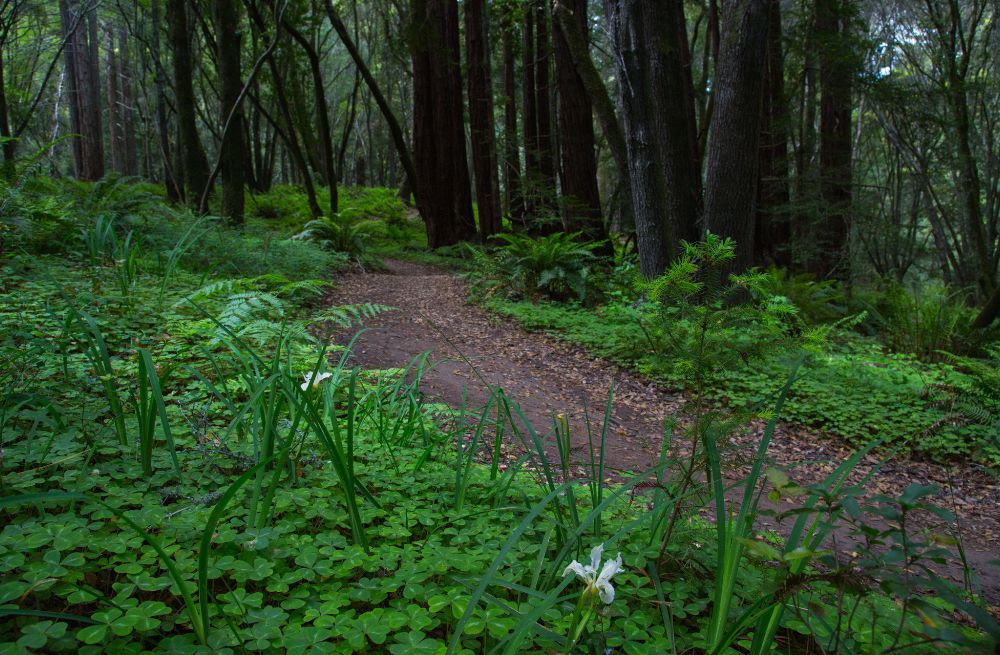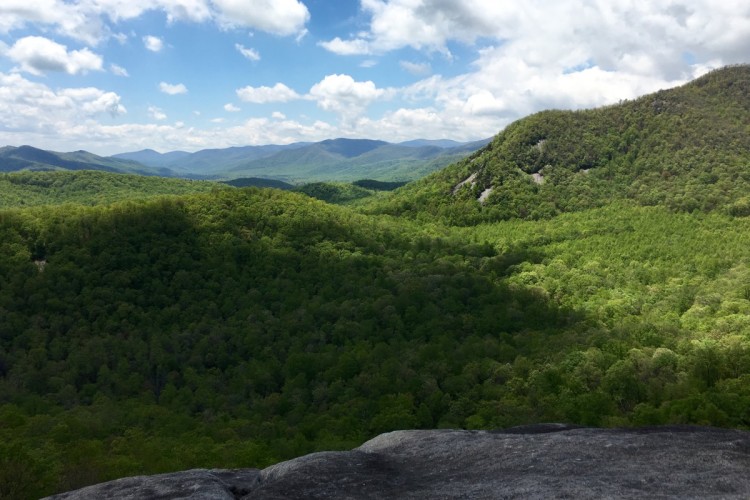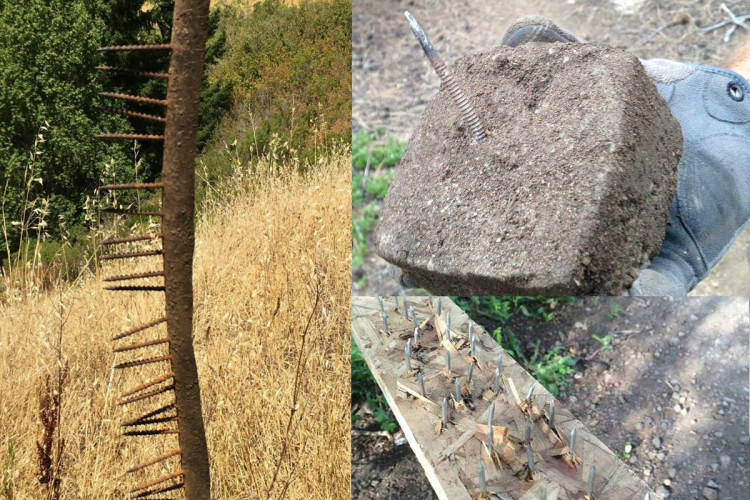
The group formerly known as Mountain Bikers of Santa Cruz (MBOSC) has formally changed their name to the Santa Cruz Mountains Trail Stewardship (SCMTS) as of April 13. The rebranding left a bad taste in some supporters’ mouths, because after 24 years of being known as the MBOSC, mountain bikers in and around Santa Cruz feel that shifting energy away from the already challenged access in the area will be a setback.
Matt De Young, the executive director of SCMTS says that they’ve already been advocating and collaborating with other user groups though, and the name change better encapsulates what the group was already doing. The rebranding follows similar recent moves by other mountain bike organizations across the country.
Greg Williams from the Sierra Buttes Trail Stewardship, which puts on events like the Downieville Classic, told Singletracks Editor In Chief Jeff Barber in a podcast that their name has been instrumental in the group’s mission. As a group of dirt bikers and mountain bikers, they weren’t sure how to best relay the mission in a brand name at first.
“In hindsight thank goodness we really keyed into just trail stewardship [because] it’s opened a lot of doors for us, especially when we partner with land managers. [We are] able to represent a community and not a particular user group.”
The Clinch Valley Trail Alliance in Tennessee also told Jeff that their name brings a similar intent. See the full article on starting a mountain bike group in your local area for more info.
Quite a few supporters of MBOSC were vocal on social media and forums about the name change when SCMTS revealed the new branding. Some are concerned that mountain biking won’t be a top concern for the group anymore. Others argued that leaving mountain biking in the name, while serving other user groups, brings a positive light back to the two-wheeled community.
To get a better understanding of the name change and how the SCMTS went about the process, we reached out to their executive director Matt De Young.
What prompted the rebranding and why is it important?
It’s something that we’ve been thinking about for a long time. For years, really, seeing the value of creating a more accessible brand. And, really, I guess, kind of the story is that Santa Cruz was really founded as more of a social club, [with] light advocacy, organization, [it was] really about drinking beer and riding bikes, to share a little bit of your public engagement.
And, this project started off focused on mountain bike access but we’ve developed this proficiency in trail construction, planning, design, and funding. And that was noticed by our partners and land managers, and they started asking us for things that didn’t include mountain bike access, like hiking and equestrian trails. And it made sense to us that we’d start start tackling those things as we get more and more into just being trail stewards.
And that that was a spectrum over time until the point now, [where] really all of our activities are focused on trail stewardship, trail access, trail development, or mountain bike races, or cycling events all existed because they raised funds for trail access. So, it became hard to explain who we were. We’re funding our own trail projects. We’re doing work that affects all trail users, not just mountain bikers. So, we wanted to have a name that reflected that and really wanting to be perceived not as a special interest advocacy group, but as the experts on all things trails, whether it’s trail management, construction, design, volunteer coordination, that’s the place we want to be coming from, where we’re having discussions about access decisions, not that we’re just representing a single group. And honestly it’s not the best way to move access conversations forward around mountain biking.
So even when the title was Mountain Bikers of Santa Cruz, you were already doing advocacy legwork for other user groups?
What I’ve been saying for a long time is that we’re advocates for best practices for trail management and development. We’re advocates for doing trails the best they can possibly be done here in our local area and region and there’s a lot of room to grow to get to that opportunity. And one of the biggest challenges we have is managing mountain biking. So I think that message is going to continue to resonate as we move forward that we want to do things better, we need to figure out how to better manage mountain biking and that means building mountain bike specific trails, and taking on how to do multi-use and directional trails.
We’re not only doing things for the benefit of mountain bikers, but those things will benefit all trail users by reducing user conflict and also really benefit our land managers. Because here in Santa Cruz County, we’ve got a pretty rampant problem around unofficial trail construction, where we’ve got far more unofficial trails than we do official mountain bike access trails, which is creating resource issues, environmental issues, trust issues. So now if we’re able to create mountain bike specific trails, we’re gonna reduce the demand for those types of opportunities and have a way away out of that kind of spiral that we’ve seen developed over the following year.
So really, we’re able to better communicate that doing things this way is better for all trail users and land managers not just for mountain bikers. It’s an easier sell as a general trails stewardship organization, rather than as a mountain bike specific organization.
It sounds like the main concern with people is that this will shift the conversation away from mountain bike access in a place where it’s been historically challenged.
Like I said, we’ve been proponents for best practices for trail management. That’s been the case for for several years now. That’s really what we’ve been pushing for. And, you know, people are going to listen to us a lot more for having this holistic approach to the issues, right?
For example, we were just advocating for access at the Cotoni-Coast Dairies National Monument, a new National Monument, just up the coast here in Santa Cruz County. We’re actually building the trails there, but we’re in the public planning stage. We partnered with the Santa Cruz County Horsemen’s Association to develop our talking points around that. We’re coming to the table with the equestrian community, and the mountain bikers, we get the neighbors’ group involved as well. So we’re all saying, ‘hey, we want to see mountain bike specific trails. Want to see multi-use trails. We want to see hiking and equestrian trails and separate use trails where that would make sense too. We want to have horse trailer parking, we want to have natural resource protection, cultural resource protection.
So, what’s the perception of that, when we’re partnering with other organizations, versus, ‘Hey, we just want mountain bike trails.’ It’s a lot more compelling to have this holistic approach. We’re acknowledging the other needs and issues as well as the need for mountain bike access.
Do you think that will open the conversation for more mountain bike only trails though?
We are spreading that message that it’s better for everyone. The problem with us being mountain bikers in Santa Cruz and coming to the table is that anyone who’s skeptical of mountain biking is already on the defensive before you sit down, right? They’re not even going to hear what we have to say at that point. Now as the Santa Cruz Mountain Trails Stewardship, we’re the experts, we’ve got demonstrated success on building trails for everyone. That’s a conversation that’s going to move the needle on these things that we haven’t been able to have in the past.
What is the current climate like between user groups in Santa Cruz?
I think we’ve got pretty good relationships out on the trails. I think right now we’re seeing the same challenges as everywhere, with the increased use out there. COVID is creating some added tensions. But, I think largely, users get along on the trails. Where we see issues, is that we have these vast unofficial trail networks, where there’s no signage, there are no rules posted. So it’s kind of hard to manage trail etiquette and encouraging people to do the right things out there, with a little bit of the wild west mentality, where you just lose that channel to communicate with people, to educate them, or [say] ‘maybe you shouldn’t right here when it’s wet, or this trail is not safe for beginners.’
Are you hopeful that some of those unofficial trails could eventually become sanctioned?
We’ve got great relationships with our local land managers, we’re actively working with them on trail development, maintenance, stewardship and we’re having honest, frank discussions around these issues. And, we’ve come a long way where, five years ago, I’d say that land managers didn’t necessarily think mountain biking was a legitimate use or need. I think people have really changed their way of thinking about it. They’re seeing how much the sport has grown. And they’ve seen it’s not just a bunch of young men out there, they see families and high school teams and diverse people out there on the trails, enjoying it. So it’s really become a mainstream sport with recognition that is not going away, that it’s not environmentally harmful, if we manage it correctly, that we need to figure out how to integrate it into a trail network. Now, it’s the question of how do we do it?
I don’t see a scenario where the trails are just all sanctioned with a sweeping gesture, but, there’s acknowledgement that we need to provide mountain bike oriented trails for riders of all skill levels. I think there would be a desire to incorporate existing trails that are working well out there, that are environmentally sustainable and whatnot.
Is there anything you’d like to add?
Yeah, I think in this day and age, where we’re seeing all this stuff on social media, it’s easy to just make assumptions and be a bit cynical. But really, we are a community-driven organization. We encourage people to reach out, we’re available to chat, so drop by our office, give us a call, shoot us an email, give us feedback and ask questions and get more engaged.
One thing we’re seeing is that people who are pretty involved with the actual work and advocacy and the trail construction are largely in support. [It’s] people on the periphery, [that] haven’t been as close in understanding what’s gone on over the years, who are are raising questions and doubts around it. All of our land manager partners are in support of this, all of our sponsors, including the bike industry, are in firm support too.
We knew there was gonna be some noise around it from the mountain bike community, [who] maybe have not been engaged in the actual advocacy work in the past. So I really just hope people take this as further motivation to get involved, because it takes a village to make these things happen and showing that strong, unified force is really what it takes to get meaningful change happening out there.























1 Comments
Apr 21, 2021